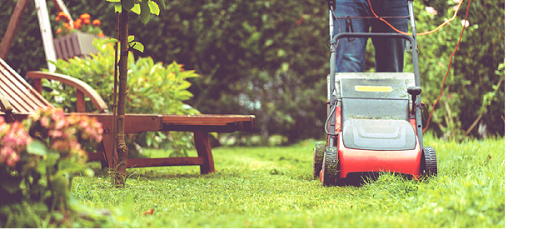The first step to rescuing your lawn is to figure out what you are dealing with. Unless you know your grass type, the condition of your soil and the type of weeds that are present, you’re likely to waste time and money on products and fixes that don’t really work. Brown areas, for example, can be due to insect and/or disease damage. Treating for the wrong issue won’t make your grass any greener and could do more harm than good.
Therefore, your first step to restoring your lawn is to inspect the grass for issues and test your soil pH. A lawn that is diseased or stressed isn’t going to respond to fertilizer, and any seeding you do isn’t going to take as well as you hope. You can have your soil professionally tested, but there are some DIY kits available that will tell you whether your soil is acidic or alkaline and what to do to balance the pH. When you know what the soil needs, you can add the proper amendments (such as lime or sulfur) to create a healthier foundation for your fertilizer and seed.
In addition to balancing the soil, a lot of what you do for your lawn depends on the time of year you purchased your home. If you move in during the summer, for example, it doesn’t make sense to fertilize or aerate your lawn, as that will harm an already stressed lawn. At this point, the best thing to do is keep watering and mowing and start your restoration efforts in the fall, once the hottest days have passed and weeds are less likely to be spread.
A spring move in is the ideal time to start rehabbing the lawn. If you notice a lot of weeds, applying pre-emergent weed control will prevent new weed seeds from germinating and making the problem worse. A good rule of thumb for weed control is to look at how much of the lawn is covered with weeds. If the yard is more than half grass or if there are large patches of healthy grass with only a few areas of weeds, you can focus on getting rid of the weeds using a targeted weed removal product and some elbow grease to pull the weeds out of the soil. If more than half of the yard is weeds or you have a lot of thin or bare patches, it’s typically better to start over entirely. This means killing the weeds with an herbicide and either tilling the topsoil or bringing in a fresh layer of topsoil to reseed. Although the spring is the best time to fertilize your grass, you shouldn’t fertilize until the weeds are under control. Otherwise, you’re only feeding the undesirable plants and encouraging their growth.
Whether you take a more measured approach or opt to start over, it’s still important to test the soil and add the right amendments before you re-seed and fertilize.


 Branch Finder
Branch Finder












Facebook
X
Youtube
Copy Link
Email